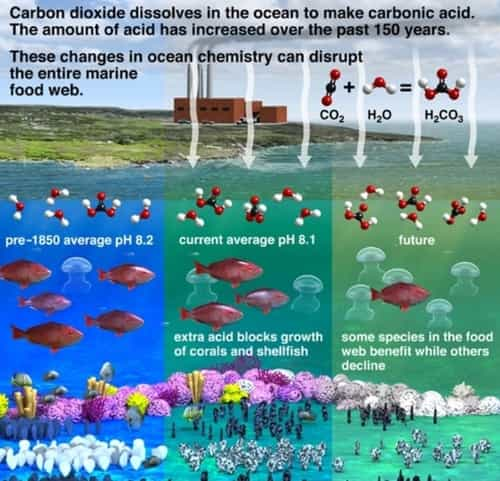Ocean Acidification: Introduction, Causes, Effects, and Solutions
Introduction
- The consistent decrease of PH level of ocean water is called ocean acidification.
- Carbon dioxide released from the burning of fossil fuels dissolves in seawater and produces carbonic acid, and this lowers the pH of the ocean water. Finally leads to ocean acidification.
- According to the recent research reports, Ocean acidification is progressing rapidly around the oceans of the world.
- The Pre-Industrialization pH of the ocean water was 8.179, which came down to 8.1074 in the 20th At present, the pH of the Ocean water is 8.069.

Source: Climate Central
Causes of Ocean Acidification
- The burning of fossil fuels
- Increase in the concentration of carbon dioxide in the oceans
- Industrial revolution leading to an increase in pollution
- Increase in atmospheric carbon dioxide concentration
- The loss of biodiversity
- Increase in the concentration of hydrogen ions due to the chemical reaction
- Lack of eco-friendly laws and regulations
- A decrease in carbonate ions
Effects of Ocean Acidification
- Loss of coral reefs
- Loss of marine plants
- Loss of marine animals
- Loss of marine biodiversity
- Disturbance in the food chain
- A decrease in the local economy due to lack of fish and other marine products
- Decline in tourism
Solutions of Ocean Acidification
- Reducing the use of fossil fuels
- Increasing the use of eco-friendly fuels
- Use of technology for reducing pollution
- Making strict regulations
- Spreading the awareness to the masses
- Promotion of environmentally friendly initiatives
- Use of Geo-engineering
Download English PDF of Ocean Acidification in English Here
Download Hindi PDF of Ocean Acidification in Hindi Here
Free मे पढ़े GS/GK Study Notes और अपनी तैयारी को मज़बूत करे



Comments
write a comment